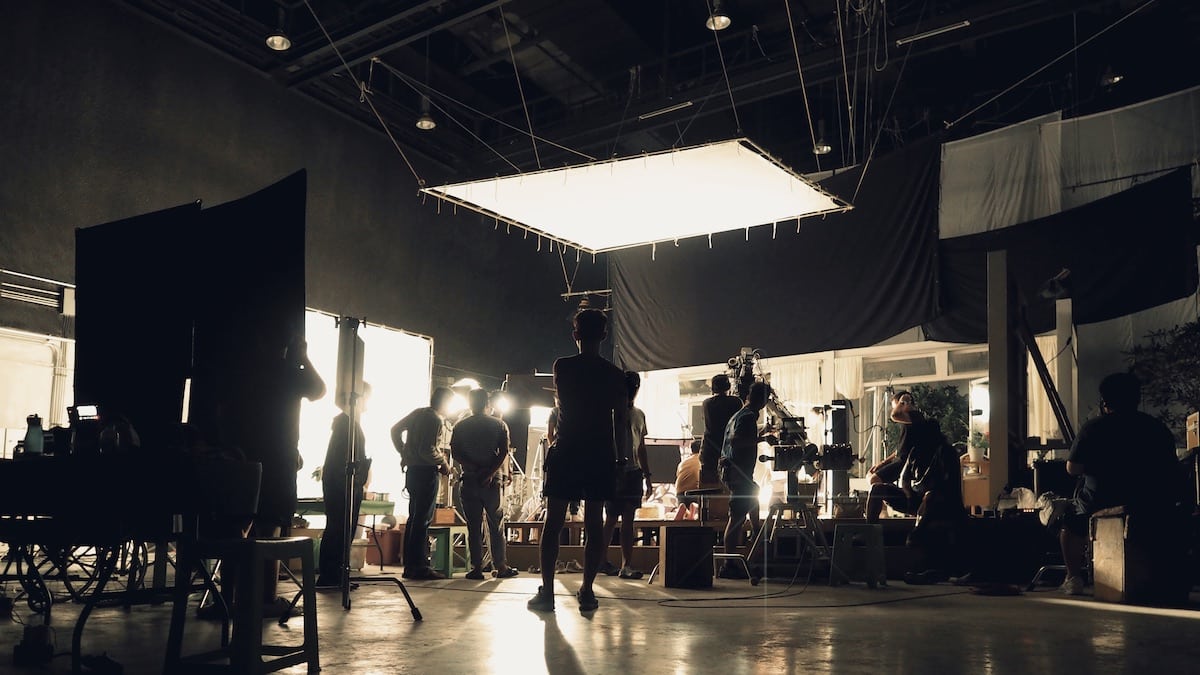One of the most crucial aspects of filmmaking is the lighting. It can make or break the entire production. Proper film lighting brightens the stage while enhancing visuals and guiding the viewer’s attention. Understanding the various lighting techniques available to you as a filmmaker is essential in taking your films to the next level. Keep reading to explore the various types of lighting in film and the different lighting techniques professional cinematographers use to create movie magic!

Why is Lighting Important in Film?
Lighting serves multiple purposes in filmmaking. It establishes the mood and can, depending on the techniques used, persuade the audience to feel varying emotions. Film lighting highlights important characters and elements, directing the audience’s focus to the right place at the right time. Lighting can also add depth and dimension to visuals, creating a more cinematic experience. Lighting is a powerful tool filmmakers use to evoke emotions and immerse viewers in the story.
One Size Doesn’t Fit All
Most beginner videographers will begin with a ring light. These lights can be useful in films and videos—they cast a bright, even light that illuminates the subject and can completely blot out the background. Since film lighting is partly responsible for conveying the mood, tone, and changes within the setting, using the proper lighting changes an entire scene. The difference between an amateur YouTube video and a professional cinematography is in the lighting, gear, and software. Understanding various moods created by lighting effects like high-key and low-key lighting and how to separate your subject(s) from the background with 3-point lighting can create this difference for your footage.
Lighting Techniques Used by the Professionals
High-key lighting is bright, even illumination across the entire setting. It minimizes shadows and creates the cheerful, upbeat ambiance often associated with comedies or light-hearted dramas. On the other hand, low-key lighting uses strong contrasts between lights and shadows, creating a dramatic, mysterious atmosphere. This movie lighting technique is commonly used in horror genres to build tension and suspense.
Another technique worth exploring is silhouette lighting, where the subject is backlit, creating a dark outline against a brighter background. Silhouette lighting is often used for dramatic effect, emphasizing the shape and form of the subject without revealing details. This technique can evoke mystery and intrigue, making it ideal for suspenseful or thought-provoking scenes.
Additionally, filmmakers often utilize practical lighting, which involves incorporating existing light sources within the scene, such as lamps or streetlights, to create a naturalistic and immersive feel. Practical lighting adds authenticity to film scenes, making viewers feel like they’re part of the story’s world. Experimenting with different lighting techniques allows filmmakers to enhance the visual storytelling of their films and evoke specific emotions in their audience.
What Types of Film Lighting Equipment Do You Need?
Just because you’re stepping away from your ring light doesn’t mean you need to buy a lot of expensive equipment to make your videos look more professional. So, how do you create the best lighting for video recording and transform your YouTube video, short film, or commercial from flat, dull clips to eye-catching, emotion-filled films?
The most popular lighting technique in filmmaking, three-point lighting, is a foundational technique used in cinematography to illuminate a subject effectively. The three-point lighting setup consists of three primary lights: the key light, fill light, and backlight.
- The key light is the primary source of illumination, positioned to one side of the subject to create depth and definition.
- The fill light softens shadows cast by the key light, and fill lights can be repositioned in order to highlight and contrast as desired.
- The backlight adds separation between the subject and the background to improve visual clarity.
By using three-point lighting techniques, your videos can come to life. Experiment with varying lighting techniques and specialized equipment, like light meters, to diversify the experiences you offer to your audience.
Cinematography lighting is crucial to a film’s success. It is crucial to setting the mood, directing the audience’s focus, and adding depth to visuals. A basic three-point lighting setup (key light, fill light, and backlight) is an effective way to achieve professional video quality without extensive equipment.
Avalanche Studios, Your Utah Video Production Experts
Unlock the secrets of filmmaking with Avalanche Studios! We specialize in crafting top-tier videos that connect with and engage viewers. From pre-production scripting to editing, our team has the skills to make your creative vision a reality.
Ready to enhance your YouTube presence or brand recognition? Reach out to Avalanche Studios now and let our seasoned videography professionals assist you in crafting compelling content that leaves a lasting impact on your audience.
Explore our portfolio to see the transformative power of professional video production. Contact Avalanche Studios today to elevate your brand or message with masterful storytelling and creativity.

Recent Comments